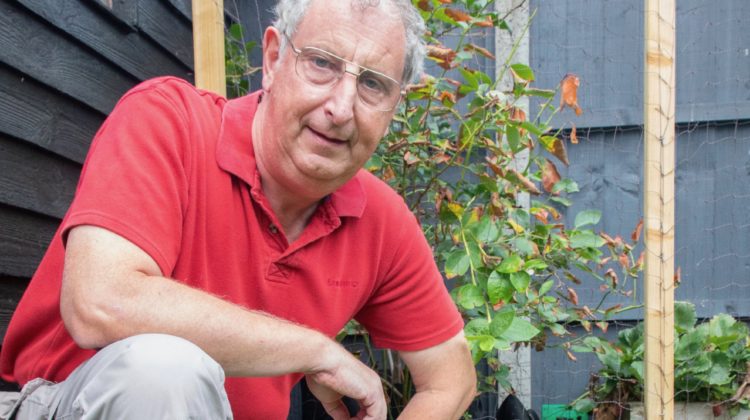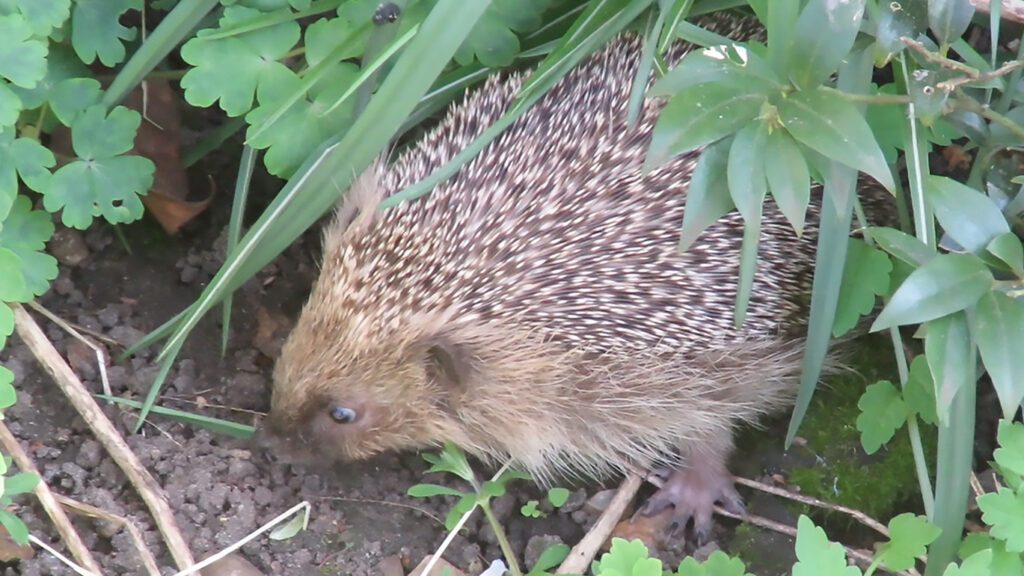
Jonathan Houseago didn’t just sign the change.org petition to help save Britain’s hedgehogs. He decided to take things one step further in the Suffolk village where he lives…
Polite persistence can go a long way, if you ask Jonathan Houseago. Especially when the future of the humble hedgehog is at stake.
Since retiring as a special school teacher a couple of years ago, the 62-year-old and his wife have been concentrating on making their small garden in Thurston, near Bury St Edmunds, as wildlife-friendly as possible.
‘My wife and I have always had an interest in wildlife,’ says Jonathan. ‘Two or three years ago we realised that we had hedgehogs visiting our garden, and we live on a housing estate – we’re not out in the wilds or anything.
‘Since then my wife bought for me a proper hedgehog feeder, which we decided to hide a camera in,’ adds Jonathan, a keen wildlife photographer. ‘We now have two feeders – one feeds dried food and the other feeds wet cat food.
‘About four or five different hedgehogs come and visit us. We did have one resident living in a nest box in the garden, before moving on (they do that).’
In lockdown, Jonathan came across the Hedgehog Highways group on Facebook, set up by author and ecologist Hugh Warwick, whose change.org petition, Help save Britain’s hedgehogs with ‘hedgehog highways’, is approaching one million signatures. Hedgehogs are now on the Red endangered list – it’s estimated that numbers are already down 95 per cent since the 1950s. Bearing in mind the fact that hedgehogs can forage up to two miles from where they nest and an adult males hedgehog’s home range is around 60 acres, a 13cm hole in the bottom of a fence would allow them to move freely between gardens to find food and a mate.
It got Jonathan thinking: ‘We need to get some hedgehog highways, so we put some in between our neighbours.’ And then it got Jon thinking even more. ‘Currently we’ve got three housing developments going on: Persimmon Homes and College Park; Linden Homes and Cavendish View and Hopkins Homes and Thurston Park.’

Jonathan was concerned that losing so much farmland around Thurston would mean losing its population of hedgehogs. So with Hugh calling upon the Government to ensure every new housing development builds in these holes for hedgehog highways, Jonathan decided to make some calls of his own. He rang each company head office and then sent politely-worded emails, appealing to them all as considerate developers.
The first to respond was Linden Homes (part of the same group as Bovis) and the upshot is that the development will have around 100 holes cut into the fences. Hopkins Homes responded to Jonathan saying that they have decided to raise all the gates by 13cm on the Thurston Park development to allow hedgehogs to get underneath into the gardens.
Finally, after a bit of to-ing and fro-ing (‘being the politely persistent guy I am I kept following it up’), Persimmon Homes wrote to Jonathan at the end of last month to say they will look to provide 75 hedgehog highways across the site in Thurston.
On the petition site, Hugh has described it as ‘amazing news’. And it doesn’t end there. Jonathan is planning to keep going with his ‘little campaign’, as he puts it. As well as hoping to meet the developers on site, Jonathan says: ‘I’d like to produce a leaflet that could be given to each new home owner, explaining the hedgehog holes in their fences and how beneficial they are. Hopefully they will encourage people to look out for the hedgehog because they are good for the garden.
‘The thing with hedgehogs is not many people understand them and they don’t necessarily know they’ve got them in the garden – unless you go outside at night you might not come across them. They help get rid of a lot of bugs and critters.’
Jonathan adds: ‘With lockdown, a lot of people started to look at their gardens differently and spend time in their gardens. There’s lovely nature out there and we need to do something about it.’

Jonathan’s five top tips to making your garden wildlife friendly:
1. Install a wildlife pond. One sure thing that will attract nature to your garden is water. Even if you have a small garden anything that can hold water sunk into the ground with a few native water plants in it will attract water insects, amphibians and the birds who will drink and bath in it. Whatever you do don’t put fish in the pond as they will eat everything that will be in the water.
2. Have a log pile or two in your garden. These will gradually rot down and will attract beetles and a myriad of other invertebrates that hedgehogs, birds and amphibians will feed on. If you talk nicely to tree surgeons they will often be grateful to get rid of logs.
3. Plant Trees. Have trees in your garden. A birch tree can be a host to about 200 species of insects. These will attract many birds. If you don’t have room for a tree or trees then plant shrubs, particularly ones that produce berries such as viburnum, wild cherry, Pyracantha and holly which will be beneficial to birds.
4. Think Nectar. Our pollinators, such as bees, bumblebees, butterflies and moths are in sharp decline due to the overuse of pesticides by farmers and lack of wildflower meadows. Grow nectar rich plants that will attract these pollinators. Try and include plants that flower at different times of the year.
5. Garden organically. Please don’t use chemicals, weed-killers or pesticides they are just so toxic to our wildlife. Try and use manual or organic methods if you have to control weeds and pests such as slugs etc. Better still, by making your garden more attractive to wildlife you will find it will attract insects and amphibians that will help control pests such as ladybirds and their larvae that will help in the control of aphids.
For more information on these top tips go to Jonathan’s website https://www.seagomacwildlife.co.uk/wildlifefriendly.shtml
https://www.change.org/p/help-save-britain-s-hedgehogs-with-hedgehog-highways/









Leave a Reply